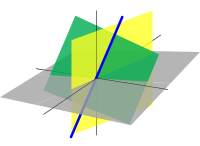
Coupling three‐dimensional peridynamics and high‐order one‐dimensional finite elements based on local elasticity for the linear static analysis of solid beams and thin‐walled reinforced structures
Sign Up to like & getrecommendations! Published in 2020 at "International Journal for Numerical Methods in Engineering"
DOI: 10.1002/nme.6510
Abstract: Peridynamics is a nonlocal theory which has been successfully applied to solid mechanics and crack propagation problems over the last decade. This methodology, however, may lead to large computational calculations which can soon become intractable… read more here.
Keywords: three dimensional; one dimensional; dimensional peridynamics; elements based ... See more keywords

Reciprocal mass matrices and a feasible time step estimator for finite elements with Allman's rotations
Sign Up to like & getrecommendations! Published in 2020 at "International Journal for Numerical Methods in Engineering"
DOI: 10.1002/nme.6583
Abstract: Finite elements with Allman's rotations provide good computational efficiency for explicit codes exhibiting less locking than linear elements and lower computational cost than quadratic finite elements. One way to further raise their efficiency is to… read more here.
Keywords: elements allman; time step; reciprocal mass; finite elements ... See more keywords

Convergence of finite elements on an evolving surface driven by diffusion on the surface
Sign Up to like & getrecommendations! Published in 2017 at "Numerische Mathematik"
DOI: 10.1007/s00211-017-0888-4
Abstract: For a parabolic surface partial differential equation coupled to surface evolution, convergence of the spatial semidiscretization is studied in this paper. The velocity of the evolving surface is not given explicitly, but depends on the… read more here.
Keywords: surface; evolving surface; finite elements; diffusion surface ... See more keywords

Nodal Bases for the Serendipity Family of Finite Elements
Sign Up to like & getrecommendations! Published in 2017 at "Foundations of Computational Mathematics"
DOI: 10.1007/s10208-016-9305-0
Abstract: Using the notion of multivariate lower set interpolation, we construct nodal basis functions for the serendipity family of finite elements, of any order and any dimension. For the purpose of computation, we also show how… read more here.
Keywords: bases serendipity; nodal bases; serendipity family; finite elements ... See more keywords

Interpolation Error Bounds for Curvilinear Finite Elements and Their Implications on Adaptive Mesh Refinement
Sign Up to like & getrecommendations! Published in 2019 at "Journal of Scientific Computing"
DOI: 10.1007/s10915-018-0795-6
Abstract: Mesh generation and adaptive refinement are largely driven by the objective of minimizing the bounds on the interpolation error of the solution of the partial differential equation (PDE) being solved. Thus, the characterization and analysis… read more here.
Keywords: error; error bounds; interpolation error; finite elements ... See more keywords

Development of ANCF tetrahedral finite elements for the nonlinear dynamics of flexible structures
Sign Up to like & getrecommendations! Published in 2017 at "Nonlinear Dynamics"
DOI: 10.1007/s11071-017-3635-6
Abstract: In this paper, methods for developing isoparametric tetrahedral finite elements (FE) based on the absolute nodal coordinate formulation (ANCF) are presented. The proposed ANCF tetrahedral elements have twelve coordinates per node that include three position… read more here.
Keywords: parametrization; nonlinear dynamics; finite elements; ancf tetrahedral ... See more keywords

The use of the local truncation error to improve arbitrary-order finite elements for the linear wave and heat equations
Sign Up to like & getrecommendations! Published in 2018 at "Computer Methods in Applied Mechanics and Engineering"
DOI: 10.1016/j.cma.2018.02.001
Abstract: Abstract The local truncation error in space and time can be efficiently used for the analysis and the increase in accuracy of the linear and high-order finite elements in the 1-D, 2-D and 3-D cases… read more here.
Keywords: truncation error; finite elements; local truncation; order ... See more keywords

An efficient contact algorithm for the interaction of material particles with finite elements
Sign Up to like & getrecommendations! Published in 2018 at "Computer Methods in Applied Mechanics and Engineering"
DOI: 10.1016/j.cma.2018.02.005
Abstract: Abstract In this paper, we propose an efficient contact algorithm to analyze the interaction of material particles with finite elements. The contact forces between material particles and finite elements are computed at the (background) grid… read more here.
Keywords: material particles; particles finite; finite elements; interaction ... See more keywords

Full H(div)-approximation of linear elasticity on quadrilateral meshes based on ABF finite elements
Sign Up to like & getrecommendations! Published in 2019 at "Computer Methods in Applied Mechanics and Engineering"
DOI: 10.1016/j.cma.2018.12.013
Abstract: Abstract For meshes of nondegenerate, convex quadrilaterals, we present a family of stable mixed finite element spaces for the mixed formulation of planar linear elasticity. The problem is posed in terms of the stress tensor,… read more here.
Keywords: full div; linear elasticity; finite elements; div ... See more keywords

A unified enrichment approach addressing blending and conditioning issues in enriched finite elements
Sign Up to like & getrecommendations! Published in 2019 at "Computer Methods in Applied Mechanics and Engineering"
DOI: 10.1016/j.cma.2019.02.005
Abstract: Abstract We present a combination of techniques to improve the convergence and conditioning properties of partition of unity (PU) enriched finite element methods. By applying these techniques to different types of enrichment functions, namely polynomial,… read more here.
Keywords: enriched finite; approach addressing; unified enrichment; enrichment approach ... See more keywords

Deep learned finite elements
Sign Up to like & getrecommendations! Published in 2020 at "Computer Methods in Applied Mechanics and Engineering"
DOI: 10.1016/j.cma.2020.113401
Abstract: Abstract In this paper, we propose a method that employs deep learning, an artificial intelligence technique, to generate stiffness matrices of finite elements. The proposed method is used to develop 4- and 8-node 2D solid… read more here.
Keywords: finite elements; learned finite; elements deep; deep learned ... See more keywords